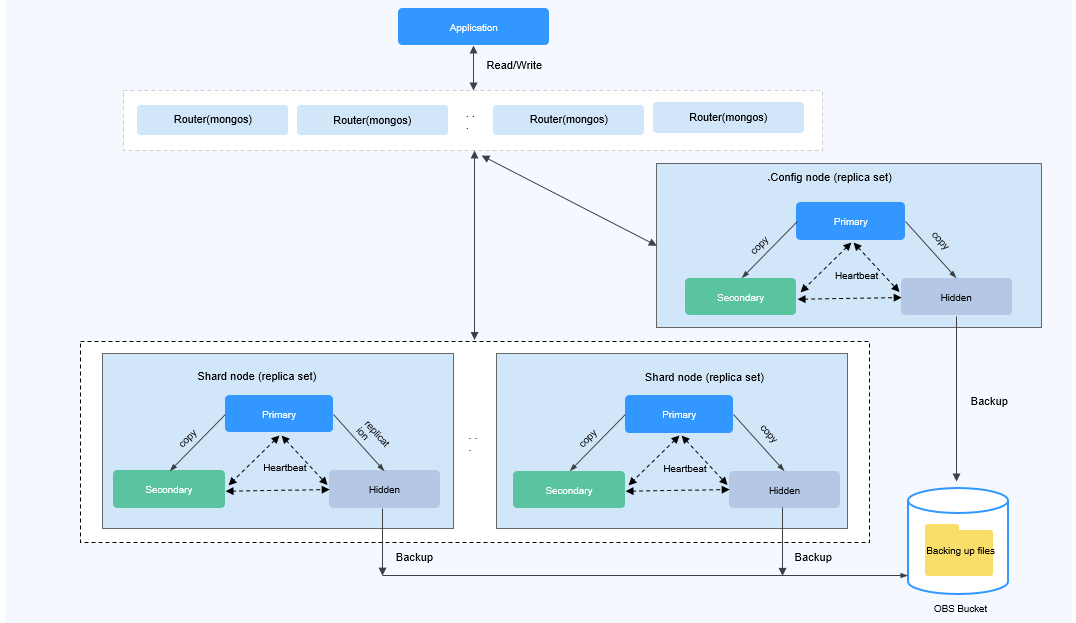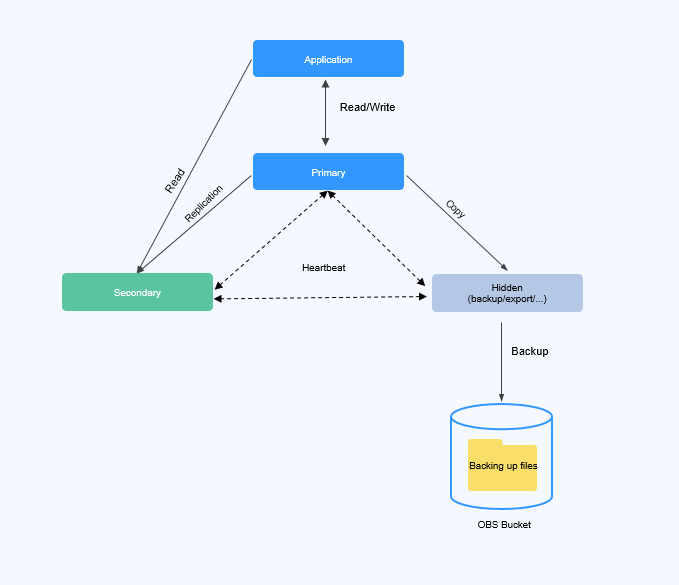Backup Principles and Solutions
DDS instances support automated and manual backups. You can periodically back up databases. If a database is faulty or data is damaged, you can restore the database using backup files to ensure data reliability.
Backup Principles
- Cluster instance
A cluster instance consists of a config node, and multiple dds mongos and shard nodes. The config node is used to store the configuration information of a cluster instance, and the shard node is used to store data of a cluster instance. Backing up a cluster instance means that data on the config and shard nodes is backed up separately. As shown in Figure 1, the config and shard nodes in a cluster instance are backed up to their own hidden nodes. The backup process occupies certain CPU and memory resources of the hidden nodes. During the backup, the CPU usage, memory usage, and primary/standby delay of the hidden node increase slightly, which is normal. The backup files on the hidden nodes will then be compressed and stored in OBS, and the storage space of the instance will not be occupied.
Figure 1 Cluster backup principle

- Replica set instance
As shown in Figure 2, replica set instance data is backed up on hidden nodes. The backup process occupies certain CPU and memory resources of the hidden node. During the backup, the CPU usage, memory usage, and primary/standby delay of the hidden node increase slightly, which is normal. The backup files on the hidden nodes will then be compressed and stored in OBS, and the storage space of the instance will not be occupied.
Figure 2 Replica set backup principle

- Backup Principles